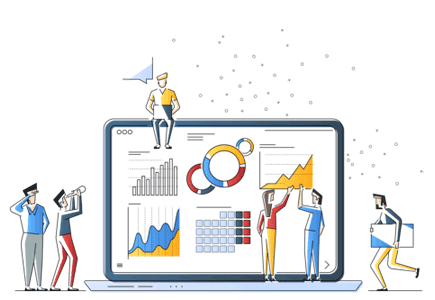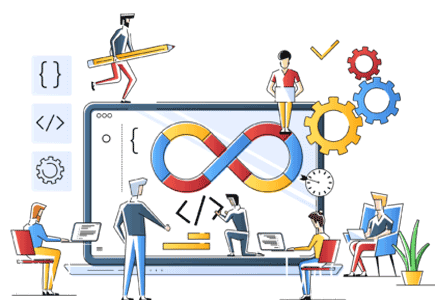Pricing is about more than just a number on a product or service; it’s a tool that directly affects profitability, customer loyalty, and market positioning. Yet too many companies are still stuck in the world of spreadsheets and manual calculations, leaving them vulnerable to mistakes, missed opportunities, and slow reactions to market changes. Price management software, like Rockton Pricing Management, provides a smarter way. By automating processes, offering real-time insights, and supporting complex strategies, Rockton Pricing Management turns pricing from a reactive chore into a proactive profit engine for all market dynamics.
The Role of Price Optimization in Business
With Rockton Pricing Management, companies can manage pricing models, including cost-plus, tiered, and volume-based pricing, ensuring that every transaction aligns with internal objectives and market realities.
Benefits of Pricing Software Across Market Dynamics
The advantages of pricing software go beyond efficiency. With automation, teams can spend less time manipulating spreadsheets and more time on strategy and growth. And, let’s be honest, in a fast-moving market, being able to adjust prices quickly is a huge competitive edge.
Key Features of Price Management Software
Rockton Pricing Management is built for businesses that want smarter, faster, and more flexible pricing. Users can create dynamic pricing rules based on customer segments, order quantities, and sales channels, automating calculations that would otherwise take hours. Integration with ERP systems, including Microsoft Dynamics GP, Business Central, and Acumatica, ensures pricing strategies flow seamlessly across the organization. Real-time updates ensure that all sales channels reflect accurate pricing immediately, minimizing conflicts and lost opportunities.
Understanding Market Dynamics
Pricing decisions are not made in a vacuum. Businesses must consider multiple internal and external factors to remain competitive and profitable.
Factors Influencing Pricing Strategies
Several key factors shape pricing strategies. Cost structures, including raw materials, labor, and overhead, form the foundation of profitability. External market forces, including economic trends, seasonal fluctuations, and industry developments, influence what customers are willing to pay.
Importance of Real-Time Data in Pricing Decisions
Here’s where software really shines. The value of pricing software lies in its ability to provide up-to-date, actionable data. Real-time insights enable businesses to respond promptly to shifts in demand, competitor actions, or changes in supply costs. This reduces the risk of underpricing or overpricing, eliminates revenue leakage, and enables proactive decision-making. With tools like Rockton Pricing Management, pricing becomes a strategy that evolves in tandem with the market dynamics, rather than a static figure set in the past.
Implementing Price Management Software
Introducing a price management solution is about more than technology. It’s a transformation in how a company approaches pricing.
Steps to Successful Implementation
Effective pricing starts with a clear understanding of costs. Prices should adjust as costs change, and often-overlooked expenses, such as landed costs, tariffs, delivery fees, storage, spoilage, and even promotions or discounts, need to be evaluated individually. Segregating and applying these costs to the appropriate items ensures pricing decisions are accurate, strategic, and sustainable.
Once costs are fully accounted for, successful implementation of a pricing solution like Rockton Pricing Management involves a structured approach.
- Define the Pricing Strategy: Establish clear goals, whether the aim is to increase margins, capture more market share, or enhance customer retention.
- Audit Current Pricing Processes: Examine existing workflows to identify inefficiencies and pinpoint where automation can deliver the most value.
- Configure Pricing Rules in Rockton Pricing Management: Set up dynamic rules and formulas that reflect the pricing strategy, ensuring prices adjust automatically as conditions change.
- Integrate with Existing Systems: Connect Rockton Pricing Management with ERP and sales platforms to guarantee seamless data flow and consistent pricing across the organization.
- Train the Team: Equip staff with the knowledge to use the system effectively and interpret pricing insights accurately.
- Monitor and Adjust: Continuously review outcomes, refine rules, and optimize pricing based on performance data and market shifts.
This approach ensures that pricing is not only automated and efficient but also grounded in reality, adaptable, and aligned with broader business objectives.
Common Pitfalls to Avoid
Setting your prices based on a simple cost-plus methodology can reduce effective margin management. More profit can be actualized by basing prices on associated product costs, such as delivery fees, tariffs, and increasing inventory costs. Missing these expenses has a direct and negative impact on profitability.
Conclusion
Price management software, such as Rockton Pricing Management, combines automation, real-time insights, and flexible rules to empower businesses to maximize profits, maintain agility, and build stronger customer relationships. It turns pricing into a proactive tool that drives profitability rather than a time-intensive pricing spreadsheet management.
Future Trends in Price Management Software
Businesses that embrace pricing innovations early will gain a significant advantage, staying agile and competitive in increasingly competitive market dynamics.
Ready to transform your pricing strategy and stay ahead of the competition? Explore Rockton Pricing Management today and see how smarter pricing can drive business success.







